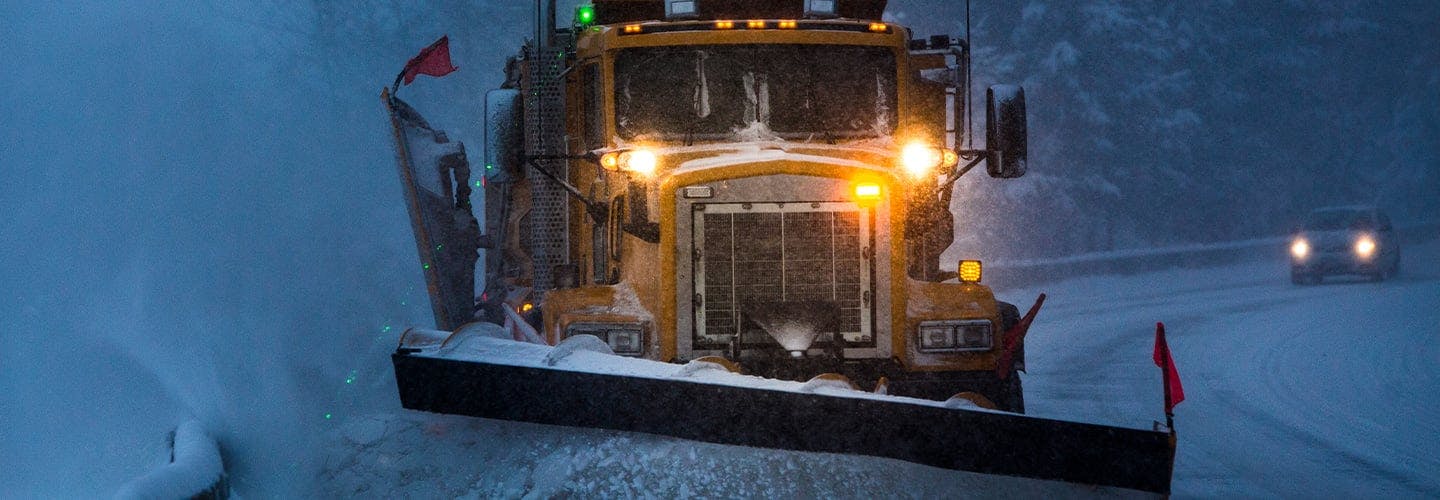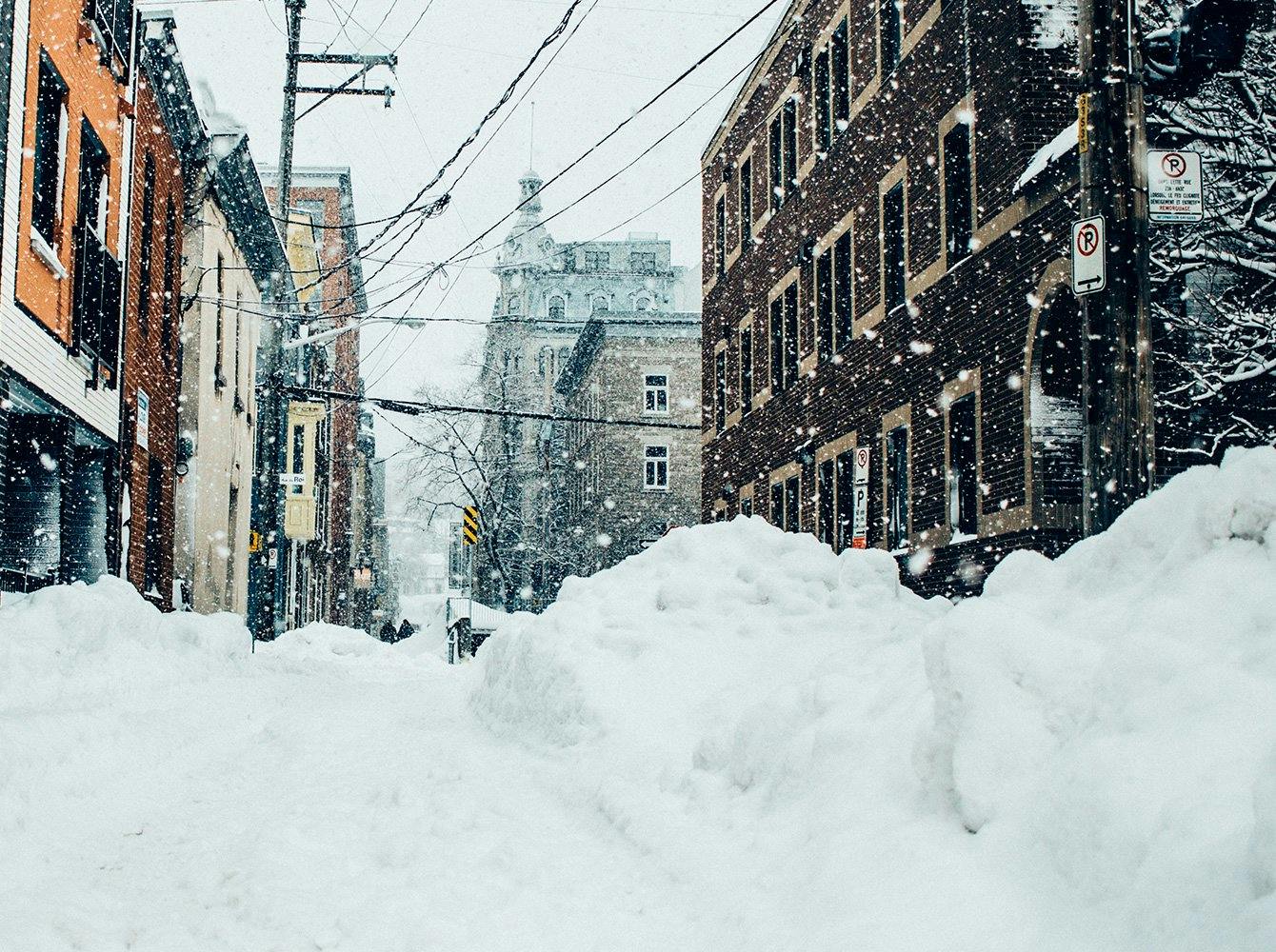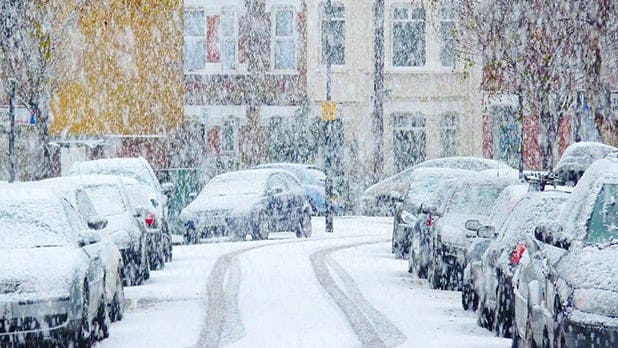Winter weather insurance resources + what you need to know
- Coverage clarity
- Planning ahead
- Homeowners insurance
- Auto insurance

Weather forecasters are usually able to predict blizzards a day or two in advance and people who live in areas prone to this type of weather know to expect a big storm or two (or more) each year. Still winter storm prep is important and shouldn’t be overlooked just because these storms occur regularly. A little winter storm preparedness can go a long way toward protecting you, your family and your belongings. With an estimated 12.7 million homes impacted by winter storm damage causing $15 million in damage (PDF), it’s definitely better to be over-prepared than under-prepared.
Protect your family while reducing your risk
1. Learn the lingo
Winter storms can take hours or even days to get to full strength, so part of your winter storm prep should be learning what the various terms used by weather forecasters mean, according to the National Weather Service.
- Winter storm warning – “A warning is issued when a hazardous weather or hydrologic event is occurring, imminent or likely. A warning means weather conditions pose a threat to life or property. People in the path of the storm need to take protective action.”
- Winter storm advisory – “An advisory is issued when a hazardous weather or hydrologic event is occurring, imminent or likely. Advisories are for less serious conditions than warnings, that cause significant inconvenience and if caution is not exercised, could lead to situations that may threaten life or property.”
- Winter storm watch – “A watch is used when the risk of a hazardous weather or hydrologic event has increased significantly, but its occurrence, location or timing is still uncertain. It is intended to provide enough lead time so those who need to set their plans in motion can do so. A watch means that hazardous weather is possible. People should have a plan of action in case a storm threatens and they should listen for later information and possible warnings especially when planning travel or outdoor activities.”
- Types of precipitation
- Rain is liquid water that remains liquid until it evaporates.
- Snow is tiny crystals of ice falling from clouds.
- Freezing rain is rain that freezes on contact with the ground, or other surfaces.
- Sleet is rain that freezes as it’s falling, landing as ice.
- Hail is ice chips that come down like rain; even though it’s ice, this is actually a summer weather phenomenon.
- Freezing fog is supercooled fog that can freeze on contact with surfaces.
- Conditions
- Flurries are light snow that falls for a short time.
- Drifting snow is light layers of snow moving parallel to the ground due to wind.
- White out is when snow is falling or blowing so much that visibility is dangerously reduced.
- Black ice is ice on a road or sidewalk that has frozen completely clear so you’re unable to see that the surface is icy.
- Wind chill is what it feels like outside when you factor in the wind.
2. Check coverages
You won’t see blizzard insurance or winter storm insurance available for purchase, but there are parts of your homeowners policy that will cover these weather conditions. Make sure that your policy has sufficient coverage in the following sections.
- Dwelling coverage – this covers the physical structure of your home and anything that’s attached, like a deck or garage.
- Other structures coverage – this covers fences, sheds and other structures in your yard that are not attached to the house.
- Personal property coverage – this covers your possessions inside the home and other covered structures.
- Loss of use coverage (aka additional living expenses coverage) – this covers a hotel and sometimes restaurant food if your house becomes unlivable due to storm damage.
Ready for a fresh perspective?
Imagine expert advice, instant insurance quotes and all your policies, all in one place.
3. Prepare your home
Winter storms mean staying at home whenever possible, so winter storm preparedness means getting your home ready for what could be a long stretch of not going outside. It’s important to prepare both the structure of your home to survive the weather and the inside of your home for comfort.
Things to do for winter storm prep:
- Create an emergency kit
- Gather all prescriptions medications
- Seal windows and doors
- Test or install your smoke and carbon monoxide detectors
- Get chimneys inspected at the start of the season
- Complete as much of this checklist for winterizing your home as you can
- Learn the signs of frostbite and hypothermia
- Write down or take screenshots of important phone numbers and information in case you are without power
- Charge your electronics and portable chargers
- Stock up on enough food for a few extra days
4. The storm is here. Now what?
Stay home. Ideally you will have had enough time to stock up on food, prescription medications and other necessities as well as prepare your house to withstand the snow and ice. During the storm you can sit back, relax and ride it out from the comfort of your sofa.
If you must travel during this time, take your time. One person driving 70 mph on the highway does not mean that it’s safe to travel at that speed. Go only as fast as you feel comfortable but remember to stay on appropriate roads, don’t drive 15 mph on the highway when everyone else is going 50 mph, and use your hazard lights so that people see you and are aware of your lower speed. Keep your car stocked for an emergency as well. Here are some recommended items to keep in your car during the winter:
- Kitty litter – for traction if you’re stuck in the snow and to weigh down the trunk
- Blankets – to stay warm if you’re stuck on the side of the road
- Winter clothing – to use in your car and also if you need to walk to safety
- Snacks and water – in case you are in there for a while
- Flashlight – for light
- Phone charger – to stay in contact with family and emergency services
- First aid kit – in case of injuries or medical emergencies
- Jumper cables – to use on your car or to help other drivers
- Flares and reflectors – so other drivers can see you if you’re on the side of the road
5. Dealing with the aftermath
After a storm you should carefully assess damage. Only do this if you’re able to do it safely. If you’re unable to do it safely, stay inside until you can. Check your home’s exterior for damage as well as other structures on the property, sidewalks, paths, driveways and trees. Pay attention both to major damage that has already occurred (e.g., a tree branch that broke a window) and damage that you might be able to prevent (e.g., a tree that’s wind-damaged and might fall in the future).
Stay safe by wearing appropriate clothing while outside. Wear warm clothes that will protect you from the elements and boots with good grip.
Know your coverage
Most standard homeowners insurance policies will cover winter weather damage. If you’re concerned about your level of coverage, a member of the VIU by HUB Advisory Team would be happy to talk to you about what coverage is recommended for your specific circumstance , how your policy measures up and if you should consider additional coverages including an umbrella policy. Consider the call part of your winter storm prep.


